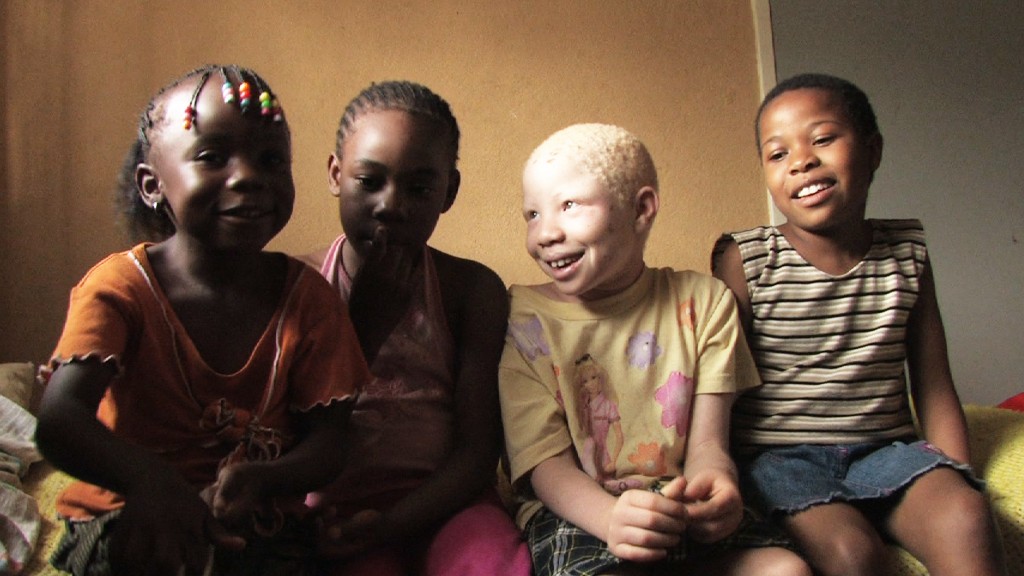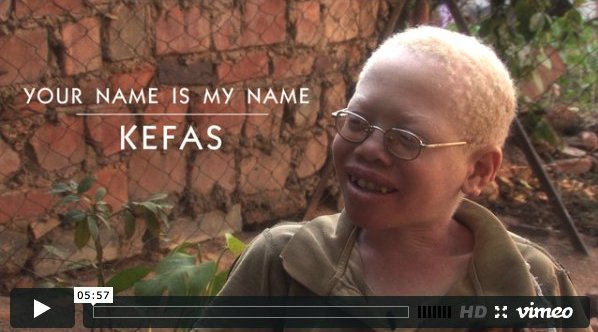Zimbabwe | Your Name Is My Name
Panashe and friends.
By Grace Aneiza Ali
Panashe (pictured above) was puzzled about why Osato Dixon kept coming to the orphanage in Harare, Zimbabwe where he lived, to talk to him. But after a few of their weekly Tuesday meetings had gone by, Panashe was feeling less shy and more at ease with the 28 year-old filmmaker. One particular Tuesday, as Mr. Dixon finally got the precocious 9-year old to settle down for his one-on-one with the camera, Panashe grabbed his identification badge and boldly declared, “Your name is my name!”
Abandoned when he was two years old, Panashe was living with over eighty children in the Harare Children’s Home. When they met for the first time in 2007, Mr. Dixon was a New York transplant and Fulbright Fellow working on his first documentary feature film on Zimbabwe’s albino community. It was also his first time in the country.
“In that moment, Panashe decided that we were similar enough or had become close enough that we were essentially the same,” explains Mr. Dixon. “There were a few catalytic moments while I was making this film. This was definitely one of them. ” As it turns out, Panashe’s declaration inspired the film’s title.
That Panashe would see himself in the same light as Mr. Dixon was no small comparison—although from first glance it might appear obvious. Panashe and Mr. Dixon have albinism—the congenital disorder characterized by a lack of melanin and leaves the skin white. Those with the condition are highly susceptible to skin cancer and massive sun burn.
Panashe doesn’t meet many albinos in Harare. “It is profound for albino children when they realize that someone understands who they are,” says Mr. Dixon about the moment that brought the two closer together.
It is profound for albino children when they realize that someone understands who they are.
In Your Name is My Name, Mr. Dixon documents the experiences of being an albino in Zimbabwe through the eyes of Panashe and two additional young Zimbabweans: fourteen year-old Kefas who is HIV positive, and twenty-five year old Miriam who is combating massive skin damage and working as a back-office accountant to pay for her treatments.
Mr. Dixon describes himself as an albino African-American. He was born to Nigerian parents who immigrated to the United States in the 1970s. He says he has always been curious and sensitive towards the more complicated experiences of people around the world with albinism—particularly in Africa where poverty, discrimination and the harsh conditions of the sun create a tri-fecta of obstacles for anyone with the condition. “I recognize that where I was born [in the United States] has made my experience of being an albino much easier,” says Mr. Dixon.
A pervasive myth in Zimbabwe advises that if a pregnant woman passes by an albino person she must stop and spit to get rid of the “spell” and ensure that her child is not born with albinism. Another myth teaches that if an HIV infected man sleeps with an albino woman, he will be cured. Albinos are seen as cursed by God, associated with witchcraft, demonic, contagious—the list of misconceptions can get lengthy.
These deeply-rooted cultural perceptions leave many albino children isolated and rendered outcastes. Because the condition impacts vision, many albino children do not go to school. Like Panashe, many are often abandoned or placed in orphanages. Parents do not want to confront the stigma of raising an albino child or cannot financially provide for the child’s medical needs.
“I recognize that where I was born has made my experience of being an albino much easier.”
Mr. Dixon avoids maligning the parents. Instead he aims to capture the complexity within the community. He interviews a single mother, Memory, that gave up her albino child. He says he hopes that when viewers see her, they can immerse themselves in her experience and try to understand what it’s like to be a mother of an albino child in Zimbabwe. “I want to show that there are very particular views within the community of albinos themselves about what’s going on in their lives and about being a person living in the continent of Africa,” says Mr. Dixon. “It’s one thing to understand and survive being an albino, but once you’ve done that you’re still a Zimbabwean, and what does that mean?”
Since 2007, Mr. Dixon has returned to Zimbabwe multiple times to continue shooting. Back in New York, he is editing the final cut of the film and preparing for several work-in-progress screenings beginning in March. Part of what motivated him to do the film was an attempt to understand his own identity on a global stage and outside his level of understanding. He says he is still coming to terms with his personal stake in the film, debating the choice to insert himself in the documentary or to remain behind the camera. “I had to stare back at the reflection of who I was as an albino while making this film,” he recalls. “As a filmmaker, I felt I needed to deal with it in a public way.”
Yet, he is adamant about what the film is not: a story of victims. “There are lots of shining stars, like Kefas,” he says, “who despite being an albino in Zimbabwe, being HIV positive, being abandoned, he’s decided that he’s simply going to be who he is and he is not going to let these things define him.”
For more information on the film, visit www.yournameismyname.com.


